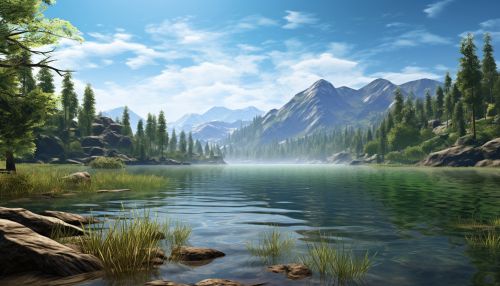Limnology
Introduction
Limnology is the scientific study of inland aquatic ecosystems, including both freshwater and saline inland waters. The field of limnology encompasses the study of lakes, reservoirs, ponds, rivers, springs, streams, wetlands, and groundwater. It is a sub-discipline of hydrology and is closely related to aquatic ecology, focusing on the structure, function, and dynamics of these inland water bodies.
History
The term "limnology" was first coined by François-Alphonse Forel, a Swiss scientist who is often considered the founder of the field. Forel's pioneering work in the late 19th and early 20th centuries laid the foundation for modern limnology, with his studies of Lake Geneva being particularly influential. However, the study of inland waters can be traced back much further, with early civilizations recognizing the importance of these ecosystems for their survival and development.
Physical Limnology
Physical limnology involves the study of the physical properties and processes of inland waters. This includes the study of water temperature, light penetration, waves, currents, and the interaction of water with its physical environment.


Chemical Limnology
Chemical limnology focuses on the chemical composition and processes of inland waters. This includes the study of nutrients, dissolved oxygen, pH, salinity, and other chemical properties. Chemical limnologists often work closely with biologists and ecologists to understand the impacts of chemical processes on aquatic life.
Biological Limnology
Biological limnology is concerned with the study of the organisms that inhabit inland waters and their interactions with the physical and chemical environment. This includes the study of phytoplankton, zooplankton, bacteria, algae, plants, and animals. Biological limnologists often focus on issues such as biodiversity, species interactions, population dynamics, and ecological succession.
Limnological Methods
Limnologists use a variety of methods to study inland waters. These include field sampling, laboratory analysis, and mathematical modeling. Modern limnology also makes use of advanced technologies such as remote sensing, GIS, and molecular biology techniques.
Applications of Limnology
Limnology has many practical applications, including water management, fisheries management, and environmental conservation. Limnologists often work closely with policymakers and resource managers to ensure the sustainable use and conservation of inland water resources.
Challenges and Future Directions
Like many scientific fields, limnology faces a number of challenges and opportunities in the 21st century. These include the impacts of climate change, pollution, habitat destruction, and invasive species on inland waters. At the same time, advances in technology and methodology are opening up new opportunities for research and conservation.
